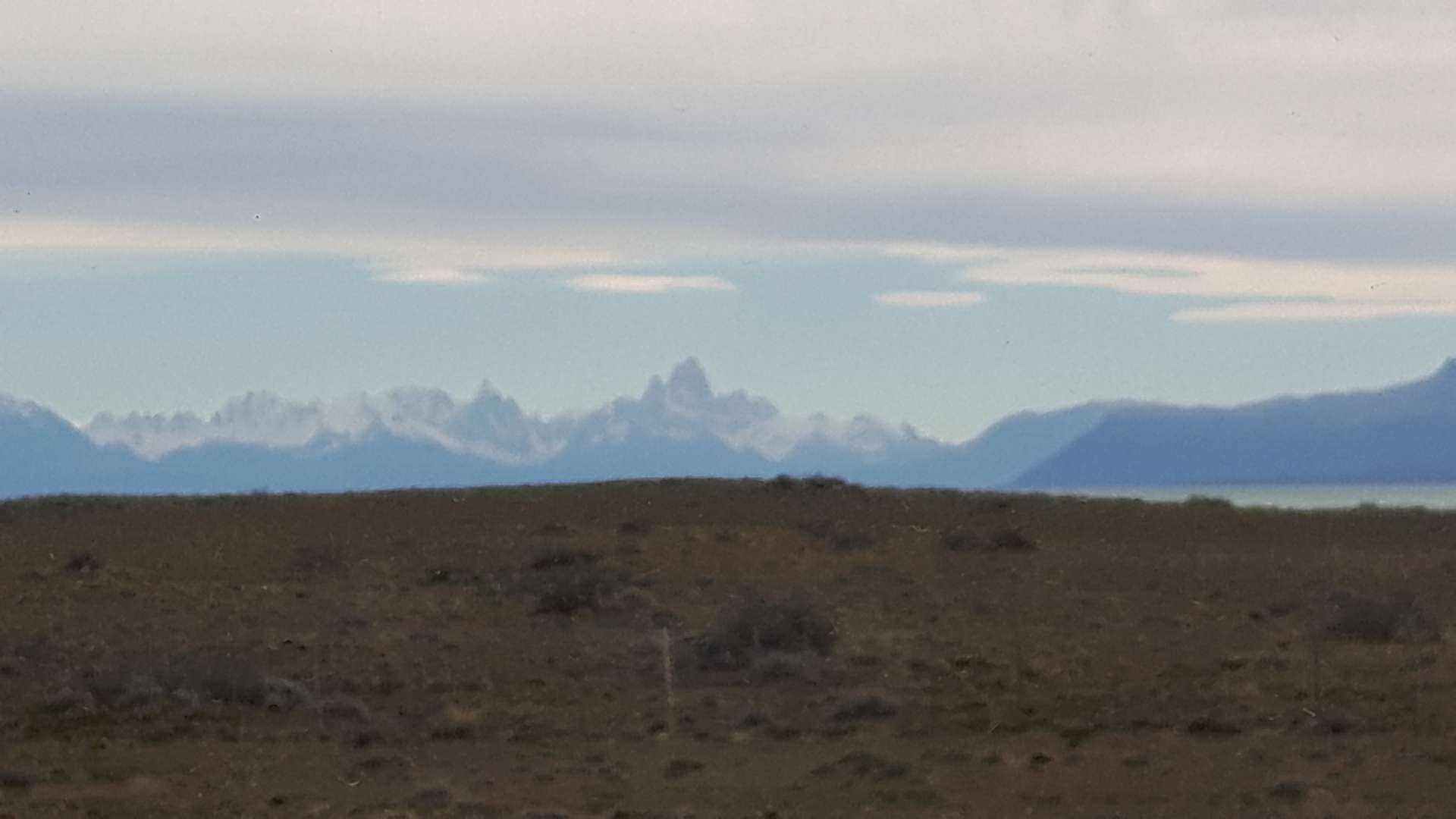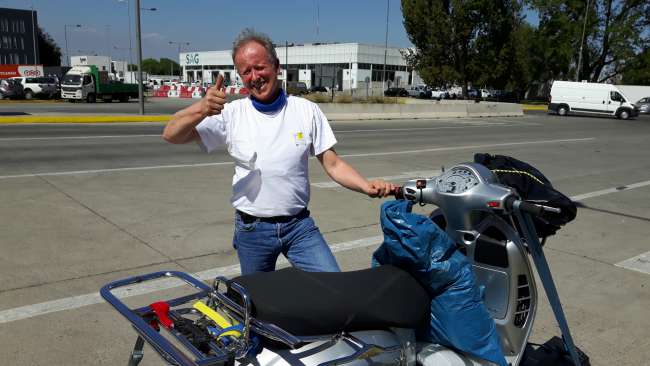ab 10.06.: Arequipa - 2,300 m
Được phát hành: 12.06.2017
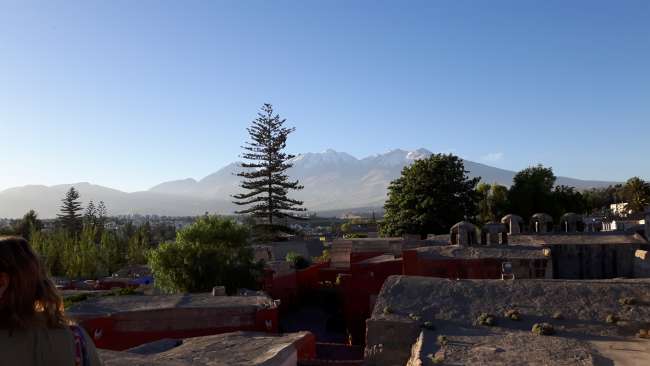
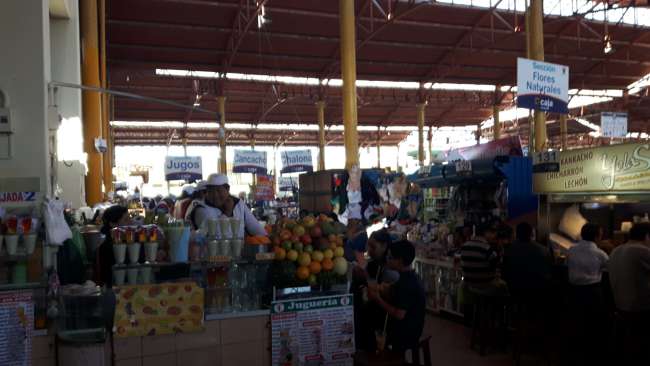
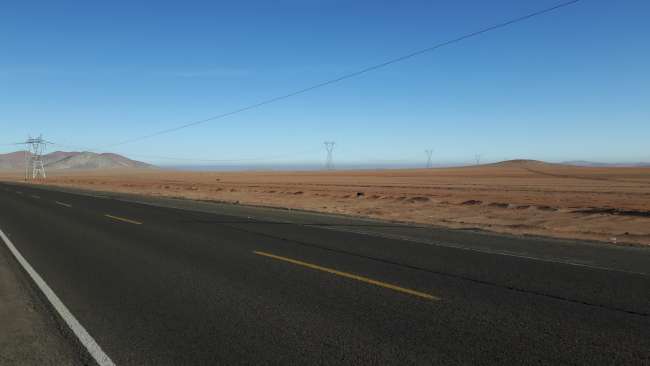
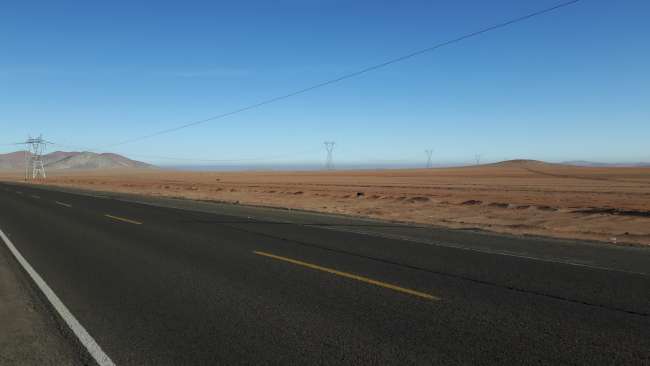
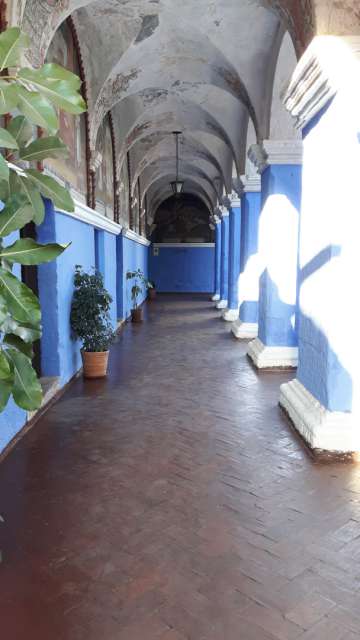
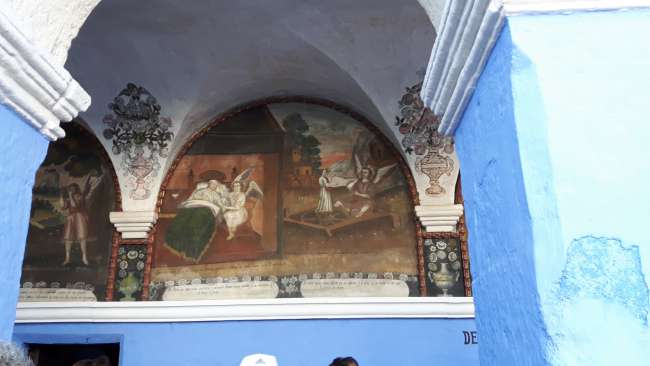
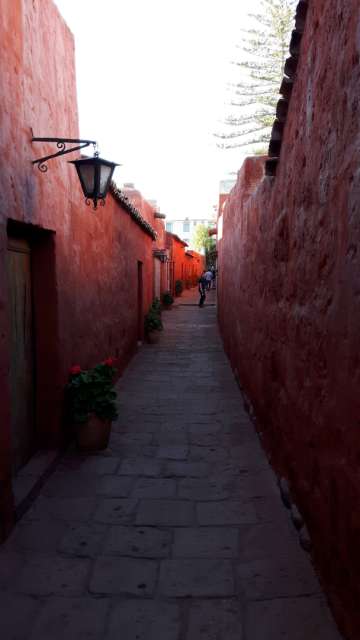
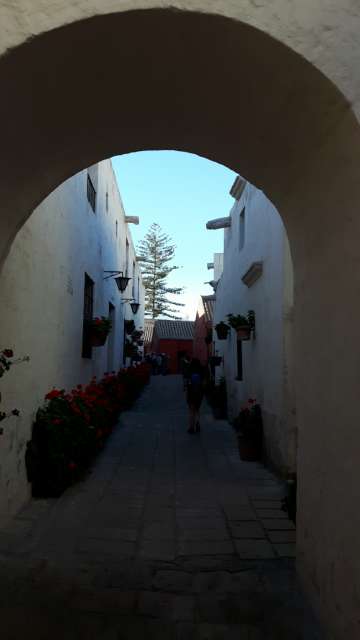
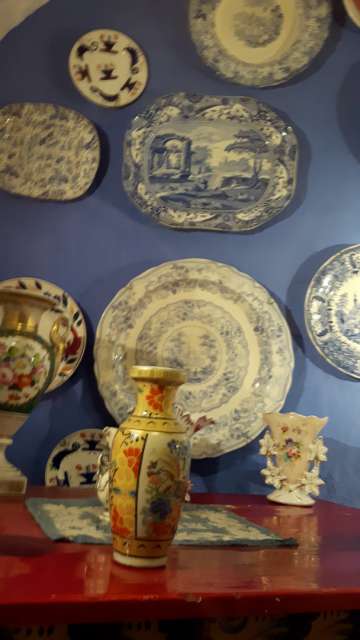
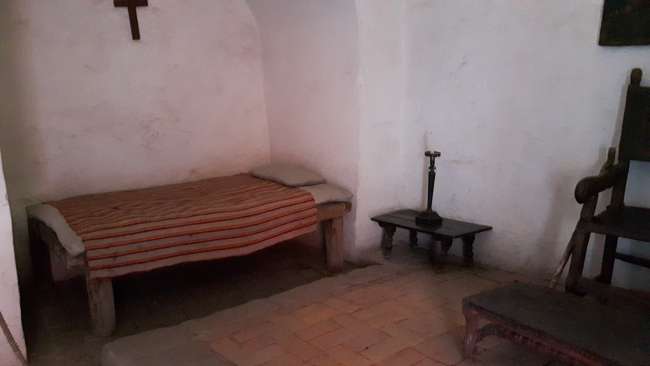
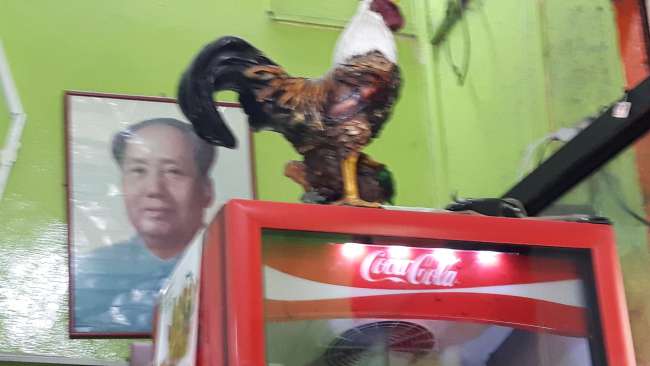
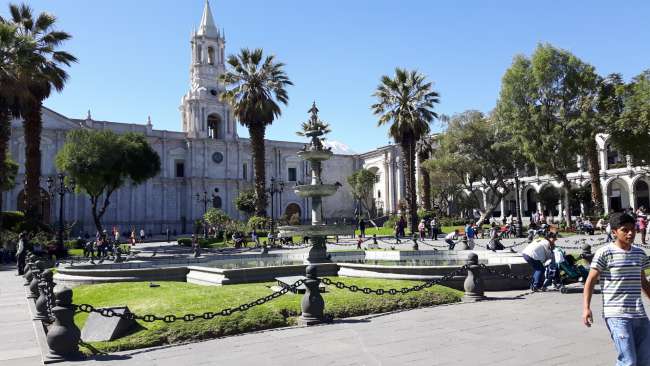
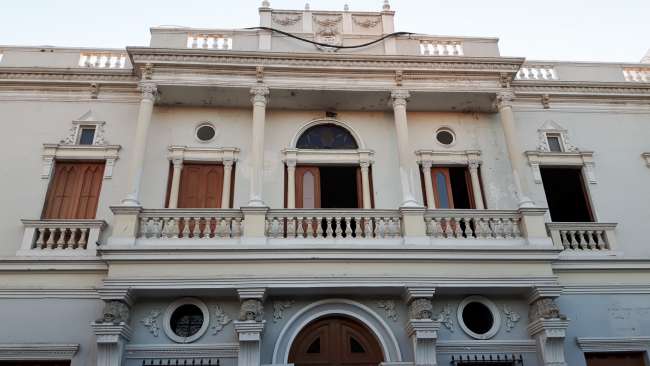
Đăng ký tin
10.06.
yesterday I planned to leave early because I want to reach Arequipa without an overnight stay.
But I can't do that without breakfast. So I take a taxi, like a king, and ask it to take me to a place where I can find hot tea and a bun. - My tea lady, who served me a big teapot yesterday, is not on duty yet.
5 minutes later, I end up at a market hall, get a bun with fried egg, and at another stall I get the tea. A quarter of an hour later, I'm back in the taxi - a so-called moto-taxi, which is a motorcycle taxi in German. But it has three wheels and space for two people behind the driver. These taxis only cost 2 soles instead of four, they are just as fast, maybe just a little bumpier.

Here, they are used as advertising spaces on bridges or to tap the beer, but here they transport people...

Equipped with two apples, water, and peanuts, I sit on the Vespa at around 11:00 a.m. Driving in the city requires much more mirror work and concentration here than in Chile, and I'm glad when I'm above Tacna and can leave it behind quickly. It greets me again with desolation and a monotonous route. I have about 300 km ahead of me. Actually not much - in European terms, although there are more cars on the roads there than here - here it's not the cars that reduce the average speed, but later the mountains with their many curves. Yesterday was cloudy, today the sun is back, the sky still undecided about how the day will develop. I have respect for fog in the mountains. It is noticeably cooler up here, and the traffic is also denser compared to the Pan-American Highway, but I'm making good progress.
There is an interruption after an hour: a customs station that checks not only trucks for their cargo, but also motorcyclists like me. At first, it's official and serious, but when the customs officer holds my passport in his hand, he becomes friendly and somewhat curious. I can leave my luggage on the bike; he would have liked to have a Germany sticker from me. A lamppost a few meters to the right of me is covered with stickers from all over the world. He gives me a small overview map of Peru and shows me the way to Cusco on it, a nice farewell, and I hit the road again. I am in the land of jugo natural - freshly squeezed fruit juice - and I hope to find a 'gas station' soon. I do find a real one, and my horror at the local fuel prices pushes aside the fruit juice. Almost 4 euros per liter. And not only here on route S1, but also in the cities. I still want to find out the reason for this. However, while refueling, I meet two brothers aged 10 and 12 who are interested in the Vespa and ask where I come from. I say Germany and cunningly connect it with the question of whether they know what the continent is called. The younger one immediately has the right answer.
The annoyance about the fuel prices is gone, as they are compensated by the relatively cheap cost of living in the cities.
If I didn't have so many kilometers ahead of me today - Google Maps tells me it will take 5 hours, but based on experience it will be 7 and it will get dark quickly - I would save myself from taking photos. The mountains have a rich reddish color, and I'm driving on a plateau, looking down and admiring the shadows created by the folds.
A short break on the way, apple, nuts, and water, and then I continue on. On the horizon, I now see the real mountains, which impress me with great respect each time. They have reached dimensions of 5 to 6 thousand meters, covered with snow, and getting closer all the time.
The wind changes, the road is again in very good condition. There were sections of the route in the past that were not yet fully paved and had only ruts. That's not pleasant for motorcyclists.
The shadows get longer - I almost miss a turn that leads me to Arequipa, and then it's serious.
The directional sign says: 14 km uphill. My Vespa notices it later. The speedometer needle barely reaches 30 km/h, then it drops more and more, and the familiar jerking begins. On the right, there is a large parking lot where I have a great view of the plain to the west, and I start to calibrate the carburetor jet. I strike up a conversation with two truck drivers waiting for their colleague. We joke around in the afternoon sun, and I try to concentrate on the wires for the jet. Luckily, I can do both; the second giant truck arrives, also greeted nicely with the same content, and then I say goodbye. The needle easily moves to 50 km/h and could go faster, but now tight curves come up and we quickly feel that we have climbed to 3,000 meters. The panoramic views keep changing, and I would love to stop and take pictures every hundred meters, but I don't want to be on the road here in the dark.
From a distance, I notice cone-shaped, snow-covered mountains. Now I know that they are the 'house mountains' of Arequipa. I'm surprised by how green the city is. It lies on a river that ensures fertility and lush greenery everywhere. A treat for the eyes! The three volcanoes are now clearly visible, no clouds in the sky, very impressive!
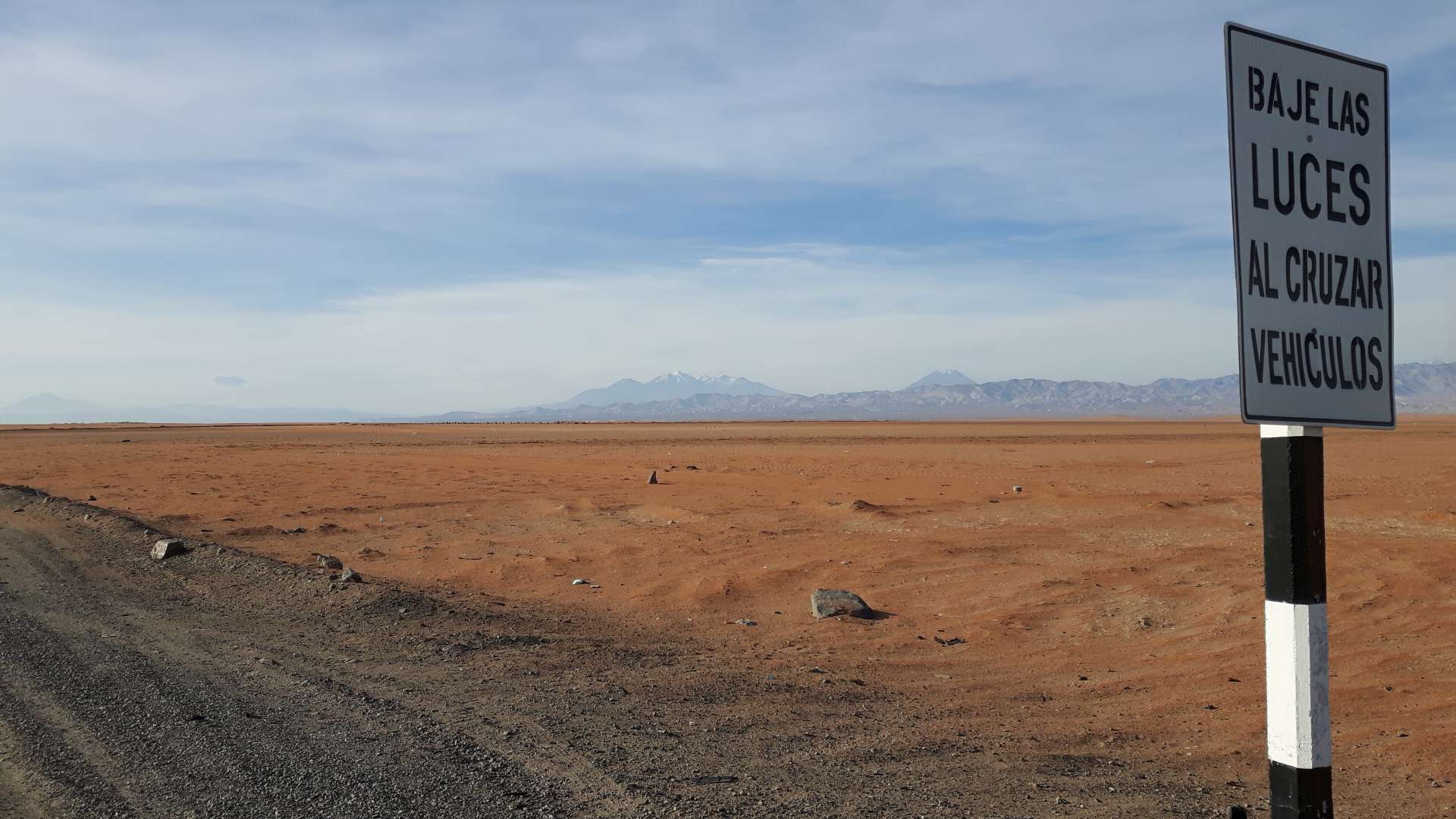

Still bathed in reddish light in the late afternoon:
Misti - 5,082 m, Chachani - 6,057 m
and the smaller and more distant Picchu Picchu
green meadows in the foreground.
This morning: sand, sand, sand...
The chaos of traffic in Arequipa greets me, which I already experienced in Tacna. What was moderate there is almost hell here! Because there are ancient buses driving through the city that emit black diesel clouds every time they start. Cyclists and motorcyclists are at their mercy and tempted to make risky maneuvers. This is no fun, especially in stop-and-go situations like this. Luckily, a bus stop comes up, and I get rid of the stinking bus. But the ancient cars here that are still allowed to operate are not much better. I can't yet properly assess the driving behavior of the Peruvians - do they yield or do they push through? As a pedestrian, I will try it at the pedestrian crossings.
The search for the hostel is finished after three attempts. The Vespa has its parking space, and I have a room with a bathroom.
In the evening, I am unintentionally subjected to the chicken dictatorship because I am starving. The only choice I have is whether I want breast or leg.
The night reminds me of the 2,400 meters, but it's not as annoying as it was in Calama.
11.06.
It's Sunday, and I doubt whether the market halls are ready for breakfast yet. No clouds in the sky, and I quickly find myself on narrow and well-populated sidewalks that are made even more cramped by street vendors selling nuts, meat skewers, sweets, and prepared fruit salads. The traffic is not as chaotic as yesterday yet, and I let myself be more or less purposefully guided to the market hall. By chance, I find the right entrance and find myself where they sell freshly squeezed fruit juices. That's a good start, and I am immediately courted by the fruit vendors. They all work at a long counter, with space fairly distributed among the juice sellers, each of whom has skillfully piled up different types of fruit as eye-catchers. So I have a choice of at least 5 to 7 vendors and blindly decide on the first one at the corner of the counter.
I feel like having mango juice with banana, and I am asked if it should be prepared with water or orange juice. Sugar or honey? And after a few minutes, the foamy and fragrant liquid is served to me in a 0.5-liter glass. As there is always some left, it is not reserved for the next customer who happens to have the same request as me; it is also not poured away, but rather generously poured into my now empty glass.

... I think I ordered a second one
Just a few steps further, I see a small stand that sells fresh rolls - what else? - with chicken, onions, tomatoes, fried potato chips, mustard, or mayonnaise. Here too, I let myself be tempted and buy two rolls, and now I'm just looking for a hot cup of tea. On the stairs to the gallery of the market hall, I am discovered by business-oriented women who want to offer me a breakfast intended more for those who have already worked hard for four hours. Vegeatable soup is not what I feel like, and suddenly I hear tea and coffee, I turn around, nod in agreement, and am taken to a small stand that would not meet the requirements of German health authorities. While sipping my hot tea, I remember a scene from the movie Soul Kitchen (director Fatih Akin), in which Jan Fedder plays a health department official in Hamburg and demands that the kitchen equipment be brought up to the latest requirements 'tippi toppi!' ... here he would be delighted.

The city of Arequipa, with a population of 400,000, is also known as the white city. However, the reason for this is not the many white buildings made of the volcanic stone silar, but a decree by the Spanish colonial rulers that only people with a white complexion are allowed to enter the city center.
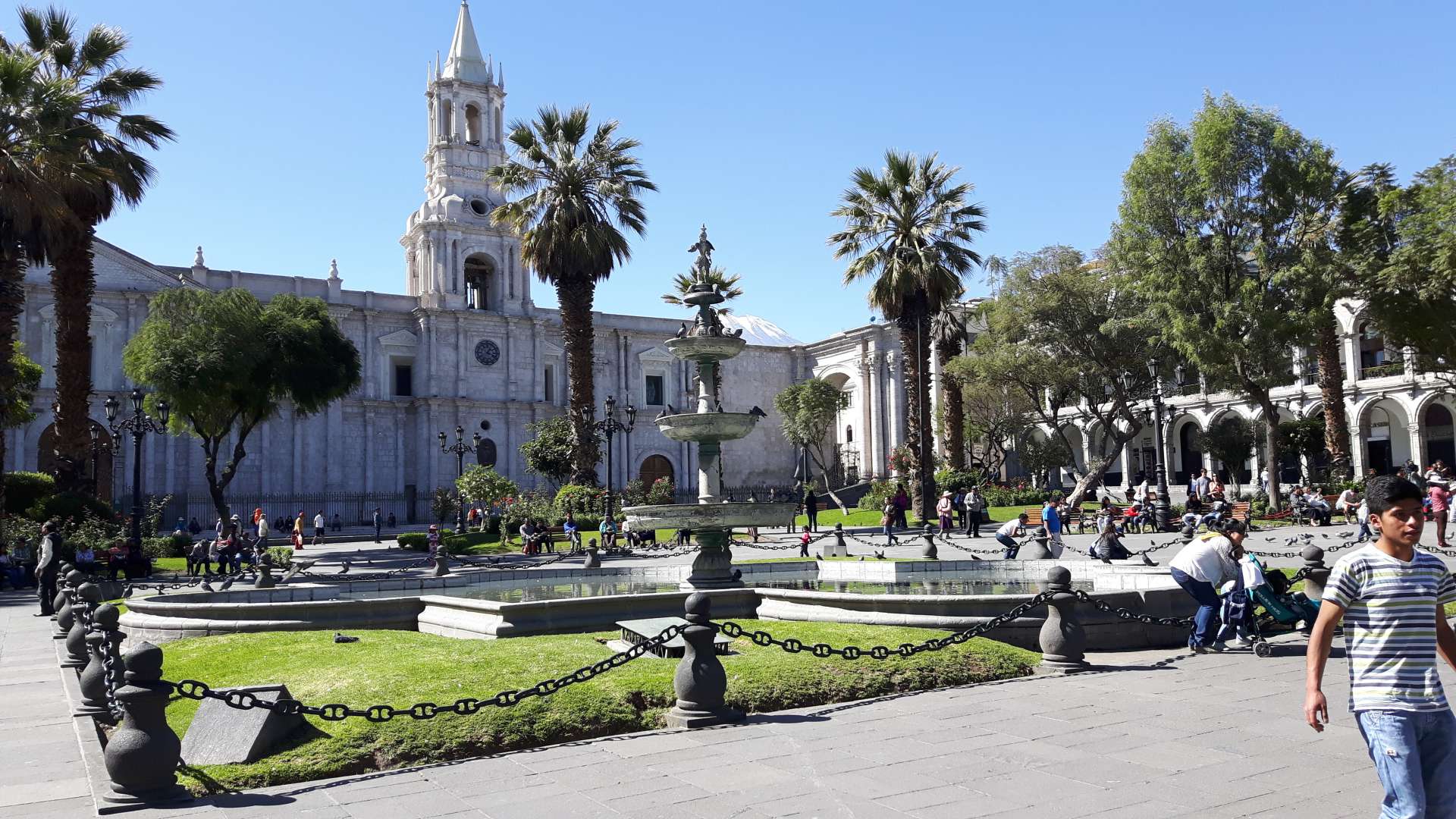
One of the few cathedrals that occupy the entire width of the plaza
Although this has changed, it is still the case in some places. TV commercials and advertising posters are as ubiquitous here as they are everywhere else. So I repeatedly notice that the actual target group is not being addressed, but only the privileged white population, which by no means shapes the cityscape. I notice this because I am repeatedly looked at here.
This is also the case in the soap operas shown in shop windows. Only snow-white actors are seen in leading roles. The serving activities - whether it's chauffeurs, waiters, or janitors - represent the people here on the street. This racism is simply accepted, as if there had never been a Mandela or a Martin Luther King.
Arequipa benefits from the Pacific Ocean, which is only 75 km away, as it is responsible for the consistently good weather. On the other hand, the city suffers from earthquakes - the last one was in 2004 - which, according to Wikipedia, are brought to mind by more or less strong tremors an average of 12 times a day.

A view of the monastery of Santa Catalina de Siena
Altitude sickness is noticeable - after all, it's 2,400 meters - I pant for oxygen even with minor efforts, my head hurts, and the desire for a bed is frequently expressed. My only rescue is an Italian café, which -
serves me not only two cappuccinos but also two sugar-sweet 'sausages' filled with pudding and fried in fat. Actually, this raises my energy level again.



A city within the city...
I am particularly interested in the monastery Santa Catalina de Siena, which was built in Arequipa in the 16th century and was walled into an area of about 20,000 m2. Here, a city within a city formed, which lived completely autonomously and housed cloistered nuns. Wealthy Spanish families who had two daughters gave the second daughter to Santa Catalina de Siena "for God and the kingdom of heaven" with a dowry of 1,000 gold pesos.
What tragedies must have played out in these families!
The life of the second daughter is predetermined, and she has no way to resist this family dictate. She can only submit and build on the Christian principles of her upbringing. If there were any at all and the daughter was not only given away or even worse, expelled from her family for trading purposes.
Monasteries are economic enterprises that must eventually become self-sufficient. So there was also lively trade between the monastery and Arequipa.
I have visited this autonomous city that, apart from a few earthquakes, has maintained its original appearance.
The gates were closed until the 1970s. In 1870, there was a reform that also allowed novices into the monastery who could not bring a dowry. In 1970, extensive renovation work had to be carried out, revealing to the astonished public English carpets, Spanish silk curtains, fine porcelain, Flemish lace doilies, and cushioned chairs. Whether conclusions can be drawn from furnishings to life itself...?


Abstinence and discipline...
What is revealed to me during my tour of the monastery does not suggest a sinful life, but rather abstinence and discipline.
For dinner, the taxi driver takes me to a Chinese restaurant, which also loves white meat but also has something to offer for vegetarians.
Vegetables and rice. What a treat!
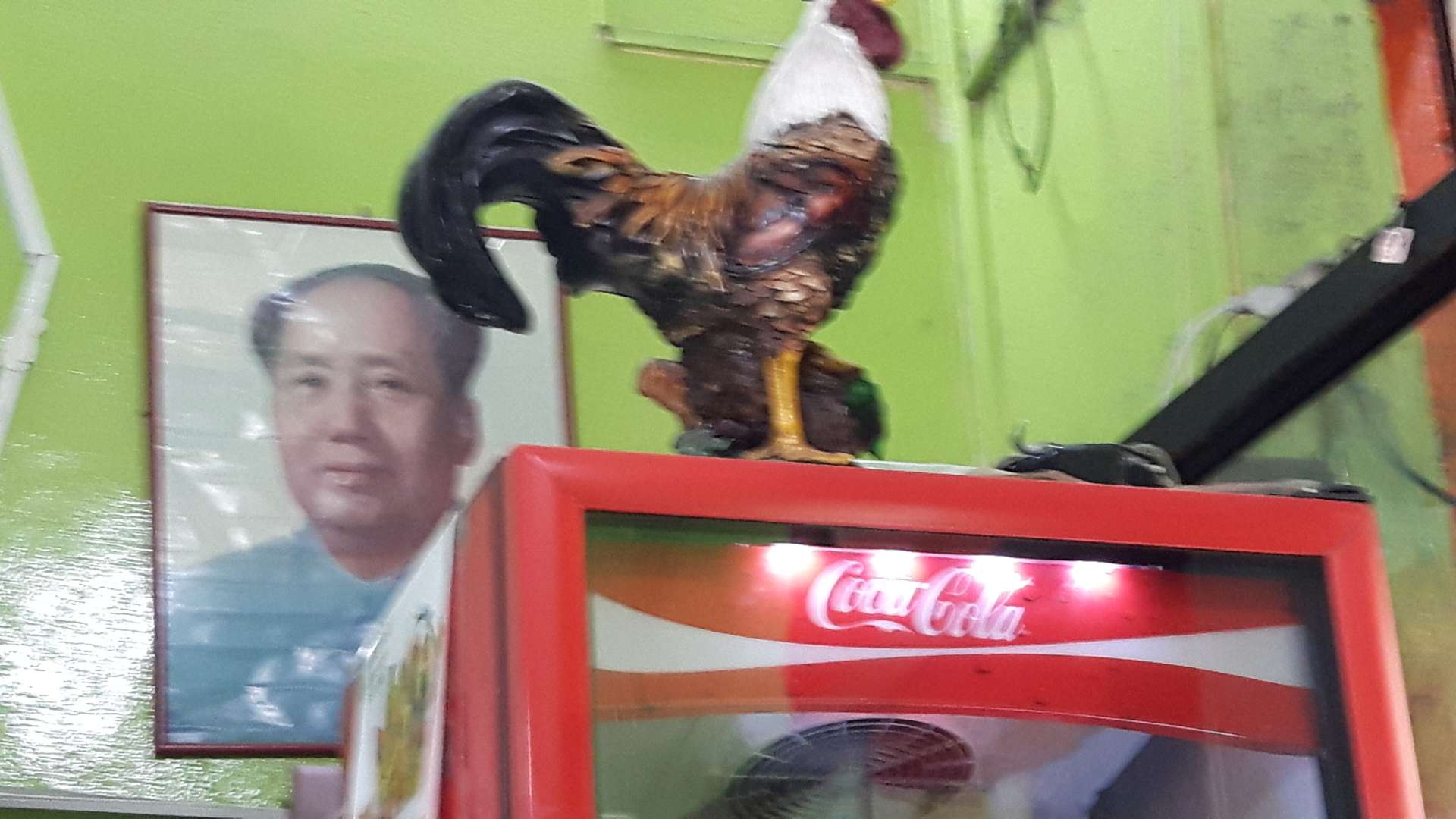
Representatives of communism and capitalism, whose thinking is clearly commented on by the proud rooster...
The next day, Espinar is on the program, but...
Đăng ký tin
Trả lời (1)
Matthias
Moin Thomas,
guck mir immer wieder gerne deine Fotos an und versuch mir vorzustellen, was du gerade empfindest, riechst ect. Mit deiner Reise hast du auf jeden Fall mein Fernweh geweckt.
besten Dank!! Wahnsinn, was du alles erlebst. Kann man das überhaupt alles verarbeiten? hoffe, dir wird die Grüne Strasse nicht zu langweilig. Aber nach so einer Tour kann ich mir vorstellen, dass man auch noch mehr sehen will ...
beste Grüsse und alles Gute aus dem sommerlichen Ritterhude,
Matthias + family
Báo cáo du lịch Pêru
